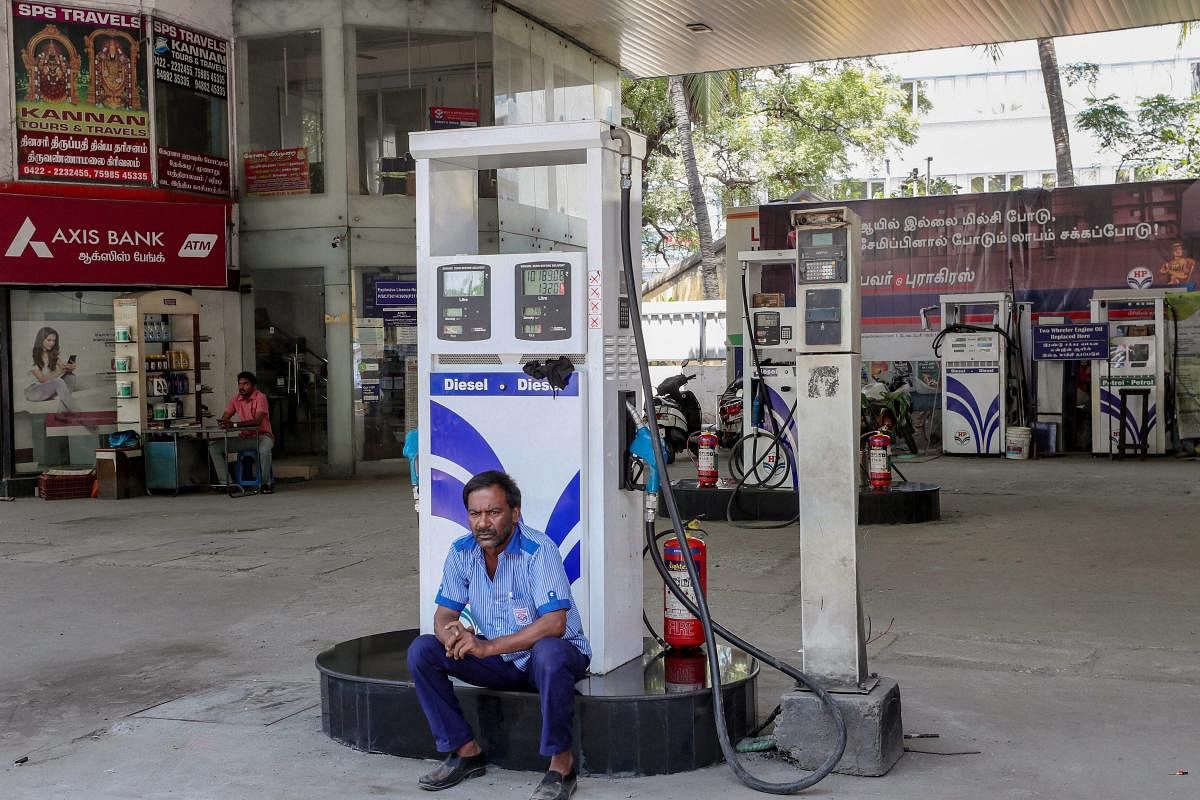
The cut in prices of petrol and diesel announced recently only told us just how shaky the government feels. All around are signs of protest, anger and disenchantment with a leadership that is now widely seen as a vendor of stories sans substance.
Farmers are unhappy and marched to New Delhi, only to be met with barricades and lathis; a large section of businessmen are unhappy and wonder if the government and regulators are in control of affairs. The way IL&FS collapsed almost overnight has brought forth the nightmares of a company “too big to fail” and the shivers of the global financial crisis of 2008.
Here, the doors closed after the horses bolted, the board was dismissed for running a charade and rewarding itself beyond all sensible limits. The rating agencies stand exposed but continue as if it’s business-as-usual. The rupee continues to plunge against the dollar.
Surveying the scene, one wonders if this is that strong government that seemed so much in control only the other day, so sure of itself that it pointed (and still points) a finger at almost everyone not in its camp.
So, the cut in fuel prices was a desperate attempt to stop the tipping point of public frustration and that sinking feeling that we are entering a phase of turbulence that the government is just incapable of managing.
There was little economic logic evident in cutting the prices at the petrol pump. If there was, the government should have done it long ago and come out boldly with a scheme that budgeted for the cut and planned the numbers accordingly. This was essentially a cut inspired by political considerations. It was an attempt not to push down the price of petrol but to shore up the sinking popularity of the government.
It was also the rhetorical flourish of Prime Minister Narendra Modi, from the time he mouthed the words as an opposition leader to berate the government, coming back to haunt him. He had then made a screeching point on rising petrol prices, and now leads a government that sits over prices rising even higher, having done nothing all these four years to rebalance the taxes or adjust the burden of duties and levies.
So, now, almost as an apology, here is a cut: out of the blue, on the eve of key state elections, sans any policy and with a short-termism and narrow sightedness that has been the hallmark of this government. The rhetoric has come home to roost four years hence. It has forced an action that ignores the implications of the road immediately ahead, leave alone the long-term panoramic vision that was possible given the majority the BJP enjoys.
That possibility of building for the long-term has been wasted in actions like demonetisation, when what was required were policies that could build from the ground-up to support and strengthen the economy and use the window offered by lower international crude prices. That difficult work was left undone amid the deviations inspired by vengeance, ego and the desire to grow not by doing some good work oneself but by putting the other side down.
Rose-tinted glasses
The trouble with telling rosy stories is not that others will believe them but that the teller becomes the victim of the rose-tinted glasses. This is a government that until recently was sure that international oil prices would not rise, and said so in as many words in the Economic Survey.
Consider art 1.34 in the Economic Survey 2016-17. It read: “It has become almost an involuntary reflex to cite geopolitics in the list of risks to oil prices, and hence to domestic inflation. But these risks may well be diminishing substantially. The oil market is very different today than a few years ago in a way that imparts a downward bias to oil prices, or at least has capped the upside risks to oil prices.”
It goes on to argue that shale oil and gas have increased the supply of oil from non-OPEC countries, especially from North America. Moreover, it said, this supply has two significant properties. It is profitable at prices close to $50 per barrel and supply responds more quickly to price changes because of much lower capital costs than for conventional oil. As a result, OPEC has less control over oil prices than it used to.
And art 1.38 concludes: “In sum, geopolitical risks are simply not as risky as earlier. Technology has rendered India less susceptible to the vicissitudes of geo-economics (OPEC) and geo-politics (Middle East). If, and to the extent that, changes prove permanent, the consequences for the inflationary process need to be taken into account.”
No sooner was this printed than prices began moving up. It has brought us to today, when petrol price in Mumbai have crossed Rs 90 a litre, and the only action is a sharp cut that will carry implications for government revenues and opens up a host of new concerns on growth.
(The writer is a journalist and a faculty member at SPJIMR) (The Billion Press)